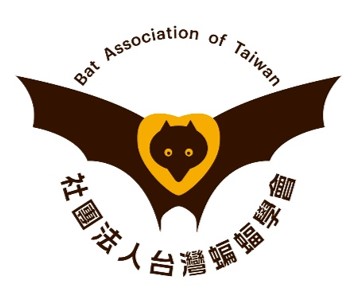蝙蝠研究
2021_墾丁國家公園三種共域食蟲性蝙蝠的資源利用_葉俊佑
出版年份:2021
研究生:葉俊佑
分類:碩士論文
題目:墾丁國家公園三種共域食蟲性蝙蝠的資源利用
Title:Resource use of three sympatric insectivorous bats in Kenting National Park
摘要:
一個物種的分布及族群數量會受到環境中非生物因子和生物因子的影響。兩個或兩個以上的共域物種具有相似棲位時,物種之間便會產生競爭,為了共存,可能會透過資源區隔來降低競爭的強度。透過共域物種的資源利用研究,有助於了解個別物種在生態系扮演的角色及物種間如何共存。本研究以墾丁國家公園三種共域食蟲性蝙蝠:臺灣葉鼻蝠(Hipposideros armiger terasensis)、臺灣無尾葉鼻蝠(Coelops frithii formosanus)以及臺灣小蹄鼻蝠(Rhinolophus monoceros)為對象,探討這三個物種在棲息及覓食空間、活動時間及食性上的資源利用情形。自2020年5月到2021年4月,於墾丁國家公園範圍內選擇森林、林緣及空曠地等三種棲地類型各16個樣點,架設Anabat蝙蝠超音波偵測器進行整夜的音頻側錄,每個樣點於濕季(5月到10月)及乾季(11月到隔年4月)各錄1夜,並進行三個物種在三種不同棲地的利用(覓食空間)及整夜活動模式(覓食時間)的分析。此外,每季至少1天,於日落前進入墾丁大圓山坑道,觀察三個物種在棲所內空間分布的季節性變化,並蒐集三個物種的排遺進行不同季節的食性分析。同時每季3天,於大圓山坑道出口處,以蝙蝠超音波偵測器側錄音頻方式,以了解三種蝙蝠傍晚離巢的活動模式。結果顯示:三種物種的食性具有差異,臺灣小蹄鼻蝠主要捕食鱗翅目、臺灣葉鼻蝠以鞘翅目為主要捕食對象、臺灣無尾葉鼻蝠則是多以蛛形綱為食。三種蝙蝠在不同季節的食性組成會有比例上的改變,臺灣小蹄鼻蝠在春季及冬季時捕食鞘翅目的比例增加,春季時鞘翅目的比例甚至會高於鱗翅目;臺灣葉鼻蝠雖然整年都是以鞘翅目為主要食物資源,但在夏、秋季時鱗翅目及半翅目等昆蟲的攝食比例有增加;臺灣無尾葉鼻蝠在春季時捕食蛛形綱的比例最高。覓食空間及覓食時間部分,臺灣小蹄鼻蝠全年都偏好在森林中活動,且整夜都有活動紀錄;臺灣葉鼻蝠於乾季時偏好在森林活動,活動集中在入夜後的數個小時內,濕季時雖各種棲地類型的利用沒有顯著差異,但在林緣有錄到較多的音頻;臺灣無尾葉鼻蝠濕季時偏好在森林活動,乾季時只在森林中有活動紀錄。在洞穴裡,臺灣小蹄鼻蝠與臺灣無尾葉鼻蝠的棲息空間不重疊,雖然臺灣葉鼻蝠的棲息空間會與其他兩物種重疊,但物種之間可以共享棲息空間。傍晚時,臺灣小蹄鼻蝠比臺灣葉鼻蝠早離巢活動,兩物種的離巢高峰時間分開不重疊。本研究結果顯示,墾丁地區三種食蟲性蝙蝠在食性、覓食空間、活動時間及棲息空間的利用上,有不同程度的區隔。
Abstract:
Distribution and abundance of a species are shaped by abiotic and biotic factors. If sympatric species have a similar ecological niche, they will compete for resources. To co-exist, species might exhibit resource partitioning to reduce competition. Studies of resource use of sympatric species can help us to understand the role of a species in an ecosystem and how species manage to co-exist. This study examined diet, feeding habitats, activity patterns and roosting behaviors of three sympatric insectivorous bat species, Hipposideros armiger terasensis, Coelops frithii formosanus, Rhinolophus monoceros in Kenting National Park. From May 2020 to April 2021, I used Anabat ultrasound detectors to investigate the activity patterns of the three species in three types of habitats: forest, forest edge and open area. In each type of habitat, I set up 16 recording sites; in each site I recorded one night in both the wet season (May to October) and the dry season (November to April). Data were used to compare the habitat use and activity patterns within and among species. Additionally, I entered the Da-Yuan mountain tunnel once a season to observe roosting behaviors of the three bat species and collected their feces for diet analysis. Anabat ultrasound detectors were used to investigated evening emerging activity patterns of each species for three nights per season. The results showed the three species had different diet habits. The R. monoceros mainly fed on Lepidoptera; the diet of H. armiger terasensis and C. formosanus, however, consisted mostly of Coleoptera and Arachnida, respectively. Food composition of the three species varied among seasons. The R. monoceros ate more Coleoptera in spring and winter; the proportion of Coleoptera was even higher than Lepidoptera in spring. Although H. armiger terasensis fed mainly on Coleoptera throughout the year, the proportion of Lepidoptera and Hemiptera increased in spring and autumn. For C. formosanus, the proportion of Arachnida was highest in spring. The R. monoceros preferred the forest-type habitat throughout the year, and their echolocation calls were recorded all night in forests. During the dry season, the H. armiger terasensis preferred the forest-type habitat in dry season but echolocation calls were recorded only within a few hours after sunset; during the wet season, the H. armiger terasensis did not show a significant difference in use of habitat types, but more echolocation calls were recorded in the forest edge habitat. During the wet season, the C. formosanus preferred the forest-type habitat but calls were only recorded in forests during the dry season. Within the cave, the R. monoceros and C. formosanus roosted in separate areas. The H. armiger terasensis was found to roost in the same area with other two species occasionally. In the evening, the R. monoceros emerged from the roost earlier than H. armiger terasensis; the two species had a different peak of emergency. The results showed that the diets, feeding habitats, activity patterns and roosting behaviors of these three sympatric insectivorous bats were different in some degrees.
